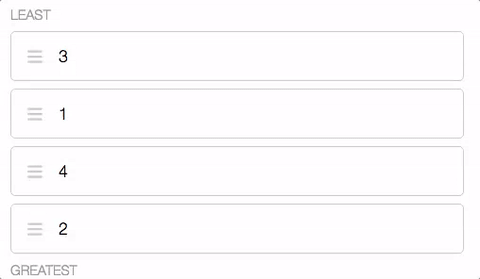Friday Fave: Ordered List
Sometimes things come in the wrong order and you need to set things right.
Back in the day, it was Netflix DVDs. In math class, it might be whole numbers or fractions or rectangles.

Sometimes things come in the wrong order and you need to set things right.
Back in the day, it was Netflix DVDs. In math class, it might be whole numbers or fractions or rectangles.

Sometimes we at Desmos have big fancy new features to announce, and sometimes we have a simple little tweak that will make a teacher’s life just a bit easier. Today we have one of the latter.
The challenge of math education is big and our team at Desmos is small. That means we have to decide every day which parts of that challenge we’ll work on and, especially, which parts we won’t. We make those decisions much easier for ourselves by defining and refining our company’s values.